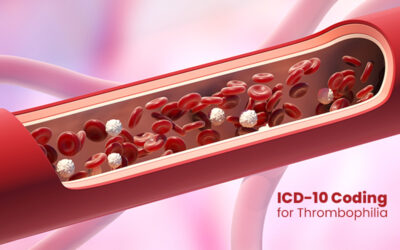Urology medical billing is complex, with ever-changing codes and guidelines. Outsourcing medical billing to a company with expertise in urology medical billing is the best option for practices to submit accurate claims for maximum reimbursement. In 2019, there are several new ICD-10 medical billing codes for this specialty. Urologists need to take note of the ICD-10 coding updates for urethral stricture, urinalysis findings, and testicular diagnostic imaging.
New ICD-10 codes for Urethral Stricture (Male and Female)
Urethral stricture is a narrowing of the urethra. The common causes of the condition are chronic inflammation, injury, infection, or the development of scar tissue. The urethra becomes narrow, making it difficult for urine to flow. The stricture can happen long after the inflammation/injury to the urethra or occur soon after a urethral injury. The condition can affect both men and women but is more common in men since their urethras are longer. Urethral stricture is diagnosed via various tests such as urinalysis, urinary flow test, urethral ultrasound, pelvic ultrasound, pelvic magnetic resonance imaging (MRI), retrograde urethrogram and cystoscopy.
In 2019, code category N35 has new codes for male and urethral female stricture that further specify anatomy:
- N35.016 Post-traumatic urethral stricture, male, overlapping sites
- N35.116 Postinfective urethral stricture, not elsewhere classified, male, overlapping sites
- N35.811 Other urethral stricture, male, meatal
- N35.812 Other urethral bulbous stricture, male
- N35.813 Other membranous urethral stricture, male
- N35.814 Other anterior urethral stricture, male, anterior
- N35.816 Other urethral stricture, male, overlapping sites
- N35.819 Other urethral stricture, male, unspecified site
- N35.82 Other urethral stricture, female
- N35.911 Unspecified urethral stricture, male, meatal
- N35.912 Unspecified bulbous urethral stricture, male
- N35.913 Unspecified membranous urethral stricture, male
- N35.914 Unspecified anterior urethral stricture, male
- N35.916 Unspecified urethral stricture, male, overlapping sites
- N35.919 Unspecified urethral stricture, male, unspecified site
- N35.92 Unspecified urethral stricture, female
- N99.116 Postprocedural urethral stricture, male, overlapping sites
Deleted – The following codes have been deleted:
- N35.8 Other urethral stricture
- N35.9 Urethral stricture, unspecified
New Urinalysis and Testicular Imaging Codes
In Chapter 18 (Symptoms, Signs, and Abnormal Clinical and Laboratory), specific codes for abnormal urine findings have been added to code subsection R82.99:
- R82.991 Hypocitraturia
- R82.992 Hyperoxaluria
- R82.993 Hyperuricosuria
- R82.994 Hypercalciuria
- R82.998 Other abnormal findings in urine
To identify other abnormal findings on diagnostic imaging, code subcategory R93.8 has been expanded as follows:
- R93.811 Abnormal radiologic findings on diagnostic imaging right testicle
- R93.812 Abnormal radiologic findings on diagnostic imaging of left testicle
- R93.813 Abnormal radiologic findings on diagnostic imaging of testicles, bilateral
- R93.819 Abnormal radiologic findings on diagnostic imaging of unspecified testicle
- R93.89 Abnormal findings on diagnostic imaging of other specified body structures
Deleted – The following less-specific codes have been deleted:
- R82.99 Other abnormal findings in urine
- R93.8Abnormal findings on diagnostic imaging of other specified body structures
Avoid these Common ICD-10 Coding Errors
A recent Urology Times report cautions against three common mistakes that can lead to audits or retroactive review of claims and take backs:
- Using C67.9 bladder cancer site unspecified: Though this code can be used if the documentation does not specify the location from which a bladder tumor was removed, the specific site of bladder cancer is usually known. The site of bladder cancer usually does not change the treatment protocol. However, the procedure note should specify the site to ensure the highest level of coding representing the patient’s condition.
- Using symptom codes: Misused symptom codes are another common error. Symptom codes are appropriate if:
- the patient is referred for a symptom
- if the symptom no longer exists and
- if no other issue is identified for the visit
- The Urology Times report explains that symptom codes should be included in claims using N40, even if the symptom is due to benign prostatic hyperplasia (BPH). The symptom should be removed from the active diagnosis list if:
- the symptom is no longer present, or
- a diagnosis has been established and the symptom is a manifestation of the disease
- Assigning cancer diagnosis when the cancer has been surgically removed, with no symptoms present: Diagnosis with a personal history of malignant neoplasm is the appropriate option for patients who had treatment for prostate, testicular, kidney, or bladder cancer and had the cancer removed, and have no elevated PSA or remaining cancerous tissue. Accurate reporting will ensure accurate ICD-10 coding.
With population aging and the increasing demands of patients, urology practices are busier than ever. Partnering with a reliable urology medical billing service provider will help providers focus on their patients while ensuring accurate claim submission. Leading medical billing companies have well-trained and dedicated AAPC-certified coders who can ensure accurate and specific coding to help urologists maximize reimbursement and minimize denials.




